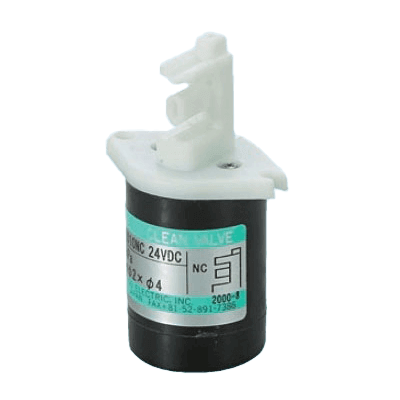What Is a Pinch Valve?

A Pinch Valve is a valve that controls fluid by pinching a conduit of flexible material such as rubber or silicone.
They are especially useful when handling fluids that contain solids. With such fluids, ordinary valves can easily become clogged and difficult to clean.
Pinch Valves, on the other hand, are easy to clean and maintain because they can completely close the pipeline. Pinch Valves are relatively simple in construction, low in cost, and highly durable.
Uses of Pinch Valves
Pinch Valves are used in many industrial fields because they are inexpensive and durable. They are especially useful in fields that handle fluids with a slight mixture of solids.
1. Medical Field
They are used in hemodialysis machines to control blood flow. They are also useful in blood samplers and syringes, enabling accurate delivery of fluids.
2. Food Processing Field
Since it can be connected to equipment such as filters and grinders, it can be used for a wide variety of processing. In addition, from the viewpoint of hygiene control in food processing, Pinch Valves, which are easy to clean, are often used.
3. Wastewater Treatment Plants and Sewage Treatment Plants
Pinch valves are sometimes employed in inlet valves of pressurizers for gypsum in wastewater plants. Pinch Valves are suitable for water treatment because of their high resistance to contaminants and easy cleaning.
Principle of Pinch Valves
Pinch Valves open and close by externally pressurizing a flexible material placed across the conduit. The flexible material is usually rubber or silicone. The valve body does not have a valve plug like a normal valve but closes by closing the conduit itself.
Specifically, the rubber tubing is sandwiched between the top and bottom of the valve body. When the valve is opened, the rubber tube returns to its original shape without any external pressure applied. On the other hand, when tightening the valve, the rubber tube is pressurized by the valve body, which deforms the rubber tube to tighten the conduit.
Because of this structure, Pinch Valves are more flexible and easier to clean than regular valves. The tightness of the valve can also be fine-tuned, allowing precise control of liquid flow and pressure. However, proper operating conditions must be observed because the rubber tubing deteriorates under severe conditions such as high pressure or high temperature.
Types of Pinch Valves
Pinch Valves are classified into several types according to their method of operation and specifications. The following are examples of pinch valve types:
1. Handle-Type Pinch Valve
A handle-type pinch valve is a pinch valve that is manually operated to tighten rubber tubing. Turning the handle pressurizes the valve body and tightens the rubber tubing. The degree of tightening can be fine-tuned, allowing precise control of liquid flow and pressure.
The easy operation and simple structure of the handle-type Pinch Valve make it suitable for small-scale flow control. If fine flow control is not required, they can be applied to large equipment such as industrial centrifuges.
2. Solenoid-Type Pinch Valve
Solenoid-type Pinch Valve is a pinch valve that uses a solenoid valve to tighten rubber tubing. Because it is controlled by a solenoid valve, it is suitable for automated flow control. They are used to supply and discharge liquids and to control reactions.
Solenoid-type Pinch Valves can be operated automatically and are often used in efficient production lines. They are also suitable when highly accurate flow control is required.
3. Pulsed Pinch Valve
Pulsed Pinch Valves are pinch valves that control flow by contraction at regular intervals. Controlled by a pulse generator or other device, it tightens the rubber tubing at regular intervals to achieve precise flow control. Because it can be loosened at regular intervals, it is more durable than other Pinch Valves.
They are used in hemodialysis machines, automated pipetting systems, and other applications where a regular supply of liquid is required. Pulse-type Pinch Valves can fine-tune the flow rate of liquid, thus enabling highly accurate flow control.